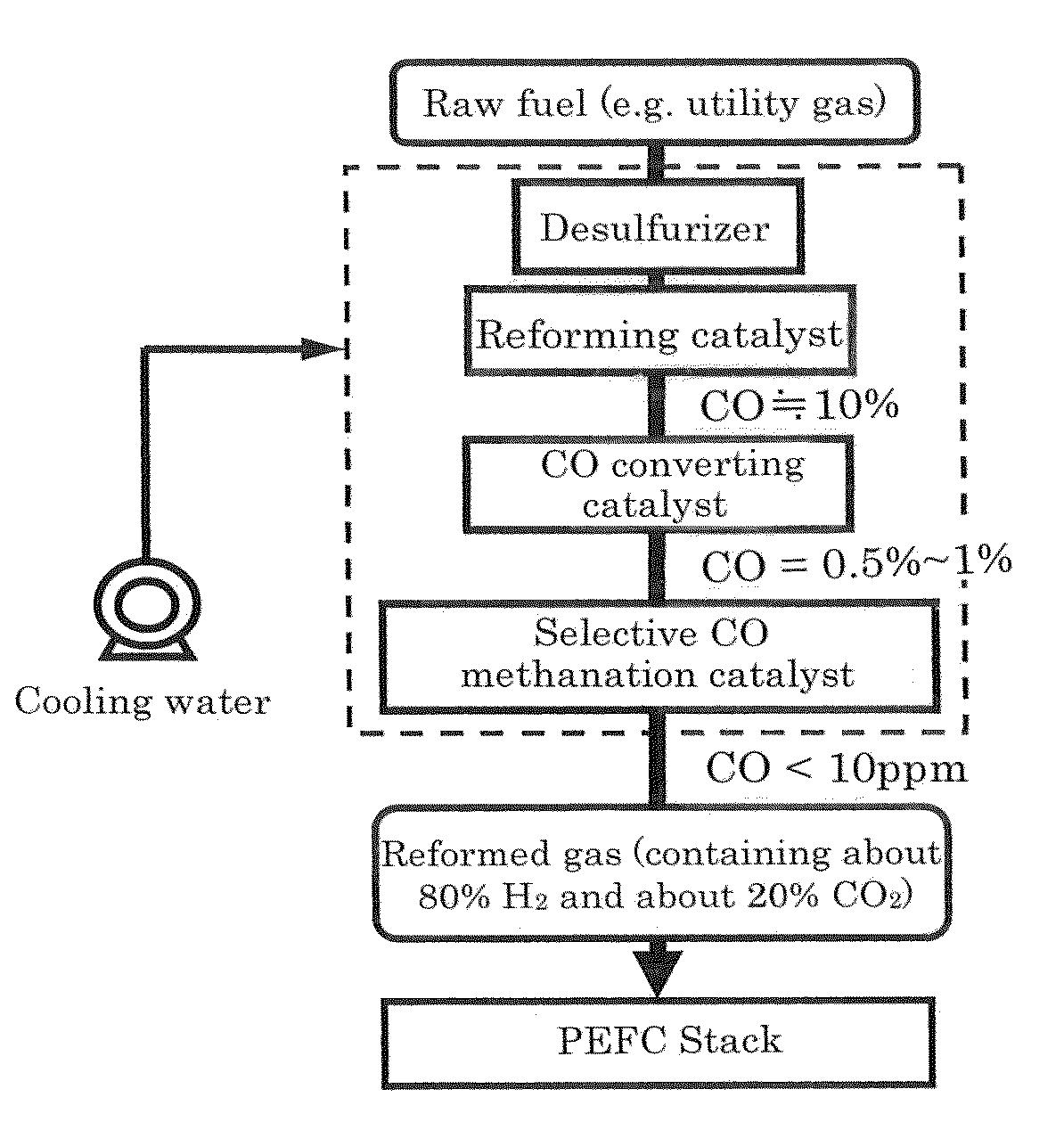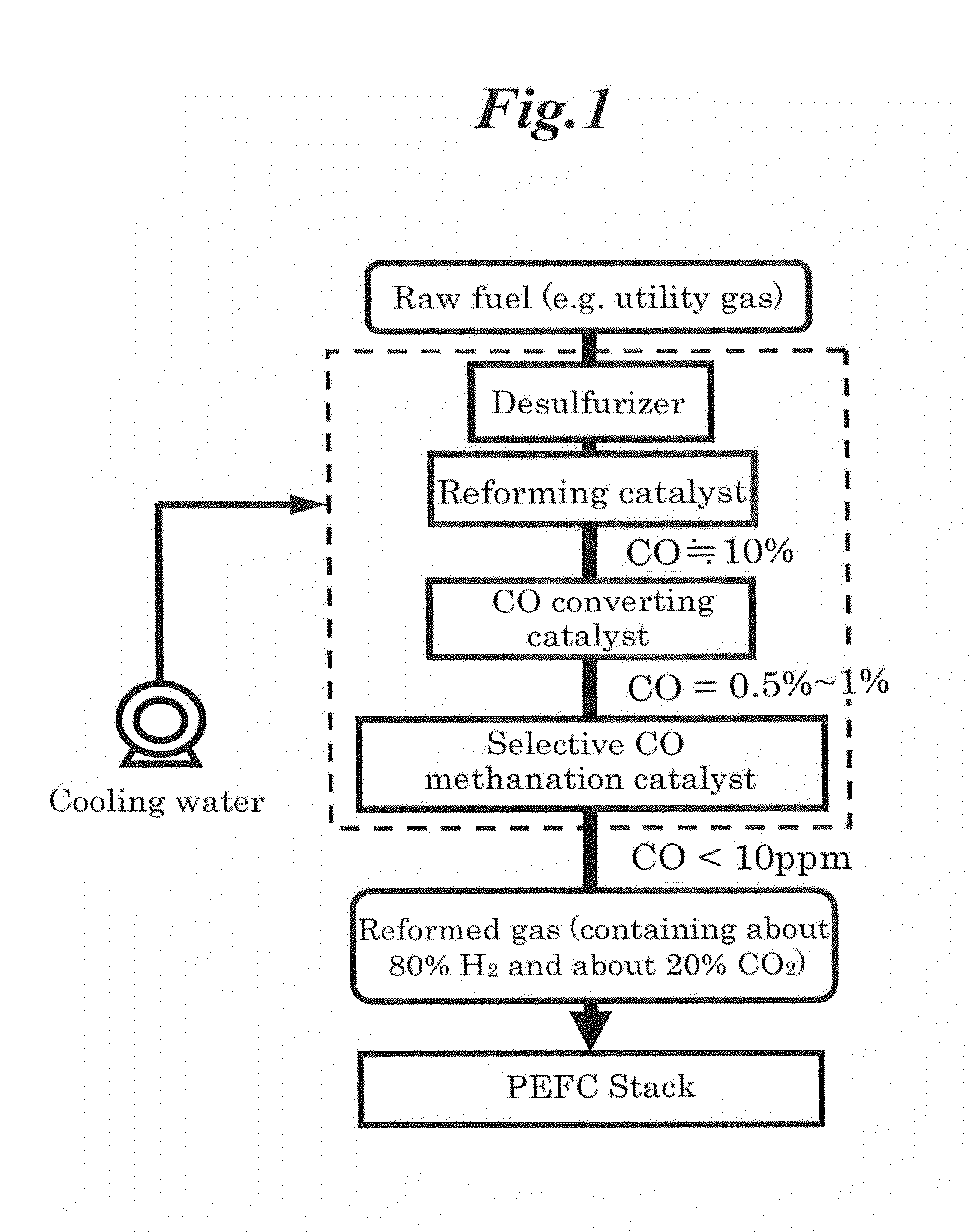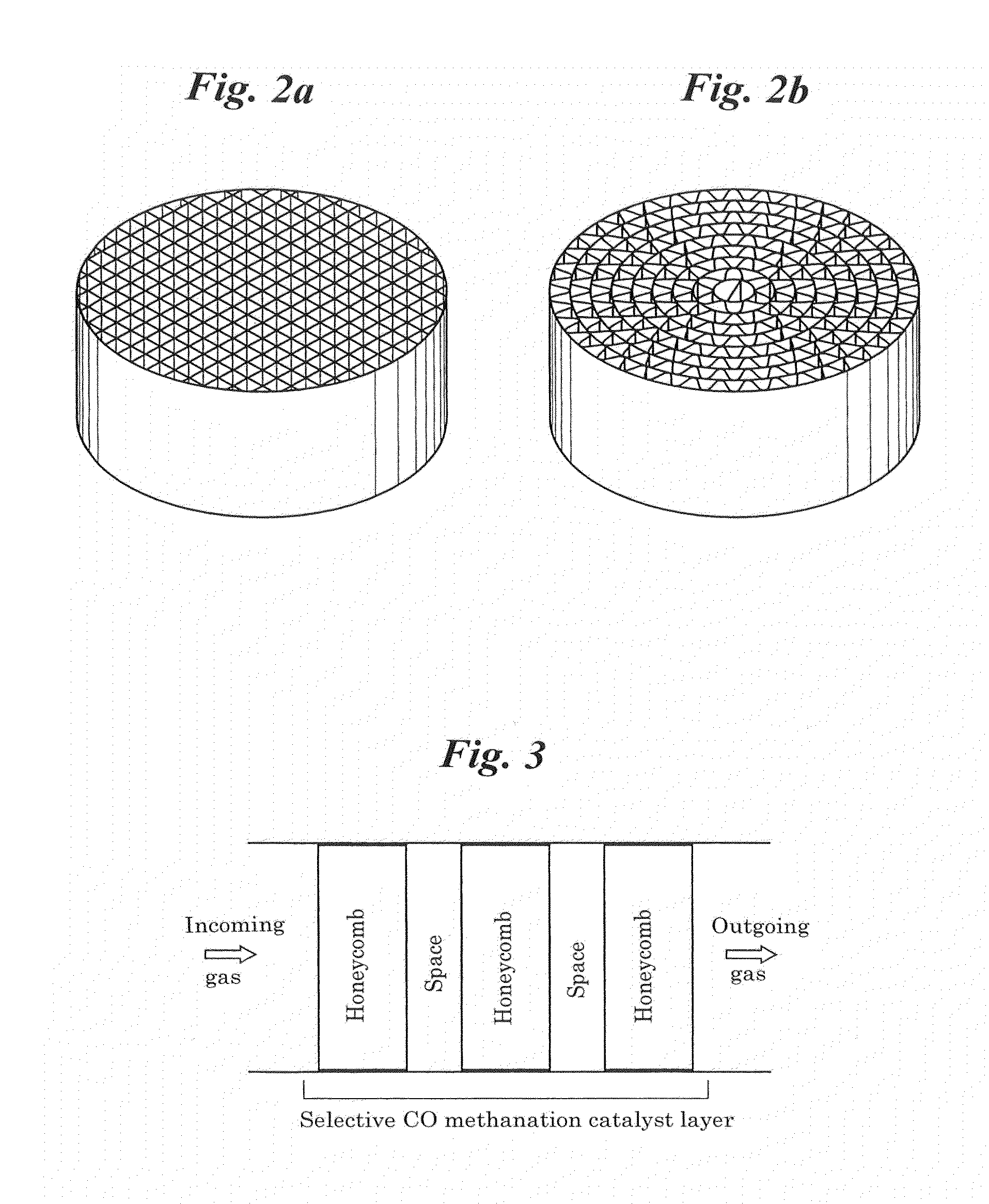Selective co methanation catalyst, method of producing the same, and apparatus using the same
- Summary
- Abstract
- Description
- Claims
- Application Information
AI Technical Summary
Benefits of technology
Problems solved by technology
Method used
Image
Examples
first practical example
[0080]As an exemplary technique for synthesizing a composite oxide precursor necessary for preparation of the catalyst according to the present invention, first will be described the low-pressure spray plasma technique.
[0081]In this technique, a low-pressure (high (radio)-frequency) thermal plasma apparatus was used. As raw material solution, 4.67 g of nickel nitrate hexahydrate Ni(NO3)2.6H2O and 17.66 g of aluminum nitrate nonahydrate Al(NO3)3.9H2O were dissolved in 100 mL of distilled water to prepare mixed solution with a Ni / Al molar ratio of 0.34. This mixed solution was sprayed and introduced with argon mixed gas containing 5% oxygen into an argon plasma torch that was fired at an output power of 100 kW and a frequency of 4 MHz in a low-pressure atmosphere apparatus. Powder generated via the plasma torch was collected through a filter. This procedure was repeated until a total weight of 500 g of powder is obtained. The collected powder was dark green fine powder obtained at a y...
second practical example
[0082]This practical example discloses a technique of producing composite oxide precursor powder using a plasma apparatus different from that used in the first practical example. The same raw material mixed solution as the first practical example was used, but the interior of the plasma apparatus was under atmospheric pressure, which was different from the first practical example. The apparatus used included three sections: a raw material solution spraying section, a plasma section, and a particle collecting section. In the raw material solution spraying section, mixed solution of nickel nitrate and aluminum nitrate prepared at the same concentration and molar ratio as in the first practical example was used to generate droplets with a size of 2 to 3 μm using an ultrasonic atomization unit (HM-303N from HONDA ELECTRONICS, Co., Ltd.) and introduced with Ar carrier gas containing 5% O2 into the plasma section. An atmospheric plasma generating apparatus (from ARIOS Inc.) having an outp...
third practical example
[0085]This practical example discloses a preferred technique of producing a composite oxide precursor without using plasma like in the first and second practical examples.
[0086]Solution A prepared by dissolving and stirring 2.0 g of triblock copolymer of a non-ionic surface-active agent P123(EO20PO20EO20) into 20 mL of ethyl alcohol was mixed with solution B prepared by dissolving aluminum isopropoxide (equivalent to 18 mmol of Al element) and nickel nitrate (equivalent to 2 mmol of Ni element) into 3.2 mL of nitric acid and 20 mL of ethyl alcohol, and stirred for five hours at room temperature to obtain a sol. This sol was dried for twenty hours at 60 degrees C. to obtain a gel, and the gel was further heated up to 400 degrees C. at a rate of temperature rise of 1 degree C. / min in a muffle furnace and then kept at the temperature for four hours.
[0087]The thus obtained powder was formed as a mesoporous material having a BET surface area of 350 m2 / g and a pore size of 6.9 nm. Using a...
PUM
| Property | Measurement | Unit |
|---|---|---|
| Diameter | aaaaa | aaaaa |
| Diameter | aaaaa | aaaaa |
| Fraction | aaaaa | aaaaa |
Abstract
Description
Claims
Application Information
 Login to View More
Login to View More - R&D
- Intellectual Property
- Life Sciences
- Materials
- Tech Scout
- Unparalleled Data Quality
- Higher Quality Content
- 60% Fewer Hallucinations
Browse by: Latest US Patents, China's latest patents, Technical Efficacy Thesaurus, Application Domain, Technology Topic, Popular Technical Reports.
© 2025 PatSnap. All rights reserved.Legal|Privacy policy|Modern Slavery Act Transparency Statement|Sitemap|About US| Contact US: help@patsnap.com



